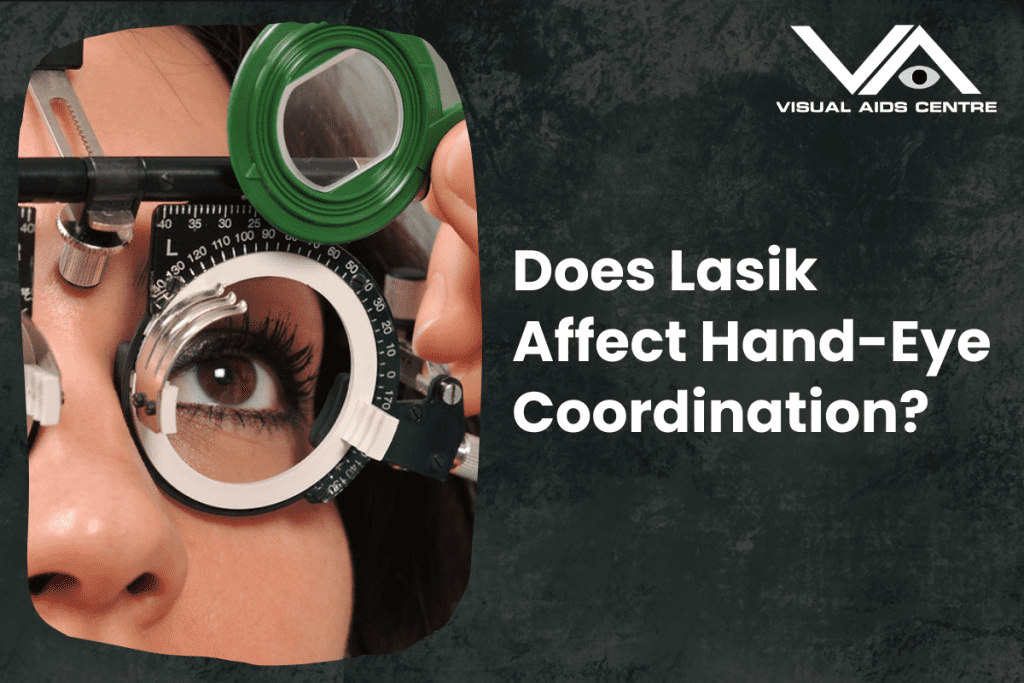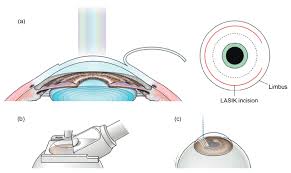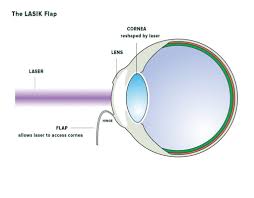Table of Contents
ToggleNo, LASIK does not negatively affect your hand-eye coordination. Improving vision can help you better sync visual input with physical responses in precise activities.

What Is Hand-Eye Coordination and Why Does Vision Matter?
Hand-eye coordination is the ability to process visual information and translate it into precise physical movements. It is a critical skill across numerous activities, from sports and gaming to everyday tasks like typing or driving. Clear, sharp vision is a prerequisite for effective hand-eye coordination, as the brain relies heavily on accurate visual cues to guide physical actions.
Before understanding LASIK’s impact on hand-eye coordination, it’s essential to know what it does. LASIK (Laser-Assisted in Situ Keratomileusis) is a laser surgery designed to correct common refractive vision issues like nearsightedness (myopia), farsightedness (hyperopia), and astigmatism. These conditions cause your eyes to send distorted visual data to the brain, potentially impacting coordination. LASIK aims to fix this distortion by reshaping the cornea so light focuses correctly on the retina, leading to clearer vision.
How Does LASIK Improve Vision for Hand-Eye Coordination?
Sharper Vision Enhances Precision in Movement
Many refractive errors cause blurred vision, which forces the brain to compensate, often slowing reaction times and lowering precision. LASIK directly addresses this issue by permanently correcting the cornea’s shape. Post-procedure, patients achieve 20/20 vision or better in most cases. This enhanced clarity improves how quickly and accurately the brain can process visual data, aiding in faster and more precise hand-eye coordination.
For example, athletes undergoing LASIK report improved performance in skill-based sports like tennis, cricket, and basketball. Why? Because precise vision is critical to tracking fast-moving objects and executing timely movements.
The Elimination of Corrective Lenses Simplifies Actions
Glasses and contact lenses can pose limitations on hand-eye coordination. Glasses may distort peripheral vision or shift during rapid movements, disrupting visual clarity. Contacts add the risk of dryness or shifting out of alignment in the eye. LASIK removes the need for such aids, allowing patients to enjoy natural, unrestricted vision. This seemingly simple change can lead to more fluid, natural physical responses.
Consider a goalkeeper saving a penalty shot. Without the distractions caused by glasses slipping or contacts drying, their responses become more instinctive and precise.
Could LASIK Temporarily Impact Hand-Eye Coordination?
While LASIK offers long-term benefits, some temporary side effects immediately after surgery might slightly affect coordination:
1. Dry Eyes
Post-surgery dryness is a common occurrence while the cornea heals. Dry eyes may cause intermittent blur, temporarily affecting the brain’s ability to process visual information accurately. However, this is manageable with prescribed eye drops and typically resolves within weeks.
2. Fluctuation in Vision
Some patients experience mild visual fluctuations during the healing phase, especially in low-light environments. This can cause minor interruptions in how hand-eye coordination functions, particularly for activities like night driving or playing sports after sunset.
3. Depth Perception Adjustments
Depth perception can feel “off” as the brain adjusts to the corrected vision. However, this is temporary, and resolves as neural pathways adapt to the clearer visual input.
How Long Does Recovery Take?
The majority of LASIK patients resume regular activities within 24–48 hours. For athletes or sports enthusiasts concerned about optimal performance, it’s best to allow a few weeks for vision to stabilise and for the minor side effects discussed above to subside. Adhering to post-surgery care, such as avoiding strenuous activities or water exposure, also aids speedy recovery.
How Specific Sports and Professions Benefit from LASIK-Enhanced Hand-Eye Coordination?
Athletes and LASIK
From professional players to casual gym-goers, athletes rely heavily on hand-eye coordination for success. Sharp, unaided vision provides a competitive edge, making LASIK a popular option among athletes worldwide.
- Baseball/Cricket Players
The ability to clearly see and track a fast-moving ball in real-time can significantly impact accuracy in hitting or catching.
- Racquet Sports (Tennis, Squash)
Players benefit from improved depth perception and peripheral awareness, both crucial to strategic gameplay.
- Archery and Shooting Sports
LASIK enhances focus on distant targets, improving precision during aiming.
Medical Professionals and LASIK
Surgeons and healthcare workers require precise hand-eye coordination, often over extended periods. LASIK eliminates the hassle of fogged-up glasses during procedures or discomfort from long-wearing contacts, ensuring uninterrupted focus and accuracy.
Gamers and LASIK
Professional eSports gamers and enthusiasts rely heavily on finely tuned coordination between visual cues and swift keyboard/mouse actions. LASIK helps by providing sharper vision, allowing for quicker reaction times and sustained focus during competitions.
Addressing Common Concerns About LASIK and Hand-Eye Impact
Is LASIK Safe for Athletes or Those Needing Precision Work?
Yes, LASIK is safe for athletes and individuals in precision-demanding roles. Modern laser technology is highly refined, with most patients achieving significant vision improvements without negative effects on hand-eye coordination.
Furthermore, studies suggest that athletes often achieve enhanced performance post-LASIK due to heightened visual sharpness and improved reaction times. Consulting with a LASIK specialist about specific activities or sports is a good idea to ensure appropriate expectations and recovery time.
Can LASIK Over-Corrections or Under-Corrections Affect Coordination?
While rare, slight over-corrections or under-corrections may occur. If this happens, follow-up procedures (touch-ups) are usually effective in refining the correction. Most reputable LASIK clinics provide comprehensive post-op assessments to address individual concerns quickly.
Will LASIK Work for Everyone?
Patients with severe dry eye syndrome, thin corneas, or progressive vision conditions like keratoconus may not qualify for LASIK. Additionally, candidates should meet specific vision requirements to ensure positive outcomes. Always consult an ophthalmologist for a thorough evaluation before considering LASIK.
Tips for Maximising LASIK Benefits on Hand-Eye Coordination
To optimise your post-surgery coordination benefits:
- Follow Recovery Guidelines: Use prescribed eye drops, wear protective eyewear when advised, and avoid strenuous activities during the healing period.
- Schedule Follow-Ups: Attend post-surgery check-ups to monitor your eye health and vision progress.
- Practise Your Skillset: Post-surgery, engage in coordination-focused activities (e.g., visual tracking exercises or sports-specific drills) to re-calibrate and fine-tune your abilities.
LASIK, Hand-Eye Coordination, and the Bigger Picture
Far from negatively impacting hand-eye coordination, LASIK typically enhances this critical skill set by providing clearer, more accurate visual input. For athletes, medical professionals, and everyday task-doers alike, clearer vision translates to improved precision, faster reflexes, and a smoother connection between what you see and how you respond.
If you’ve been considering LASIK to take the next step towards visual freedom and enhanced performance, consult a trusted ophthalmologist today. Clearer vision and sharper coordination may be just one procedure away.













